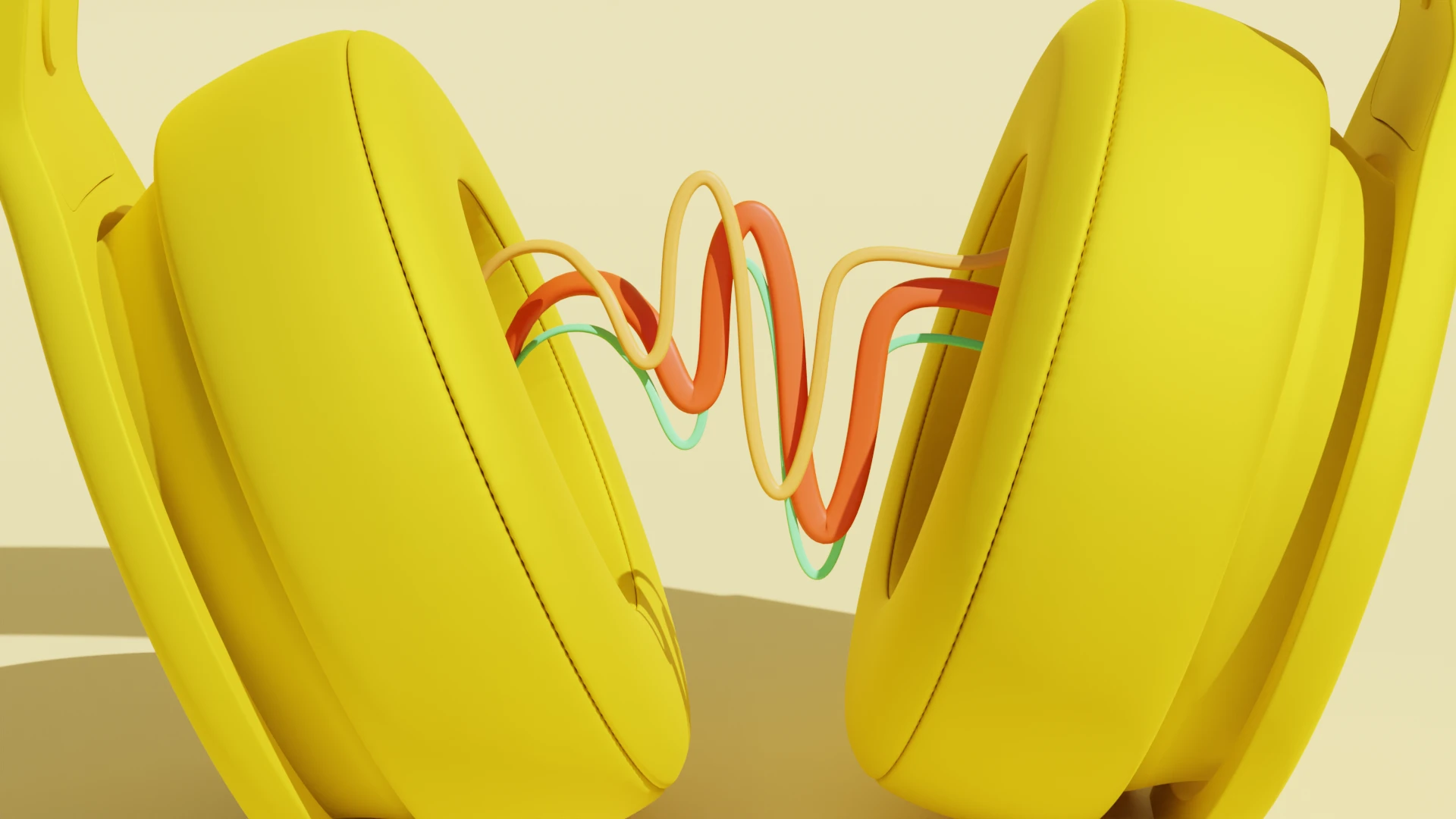Good microphones are expensive and fragile pieces of equipment, so investing the extra money in a dependable stand will save you money in the long run.
A good microphone stand ensures that any unwanted vibrations are left out of your recordings, a vital step in improving audio quality of a recording right out the gate.
Whether you go for a desktop microphone stand that mounts next to your laptop or a telescopic microphone boom stand with an arm that can maneuver wherever you are, you’ll want a product that’s worthy of the microphone mounted on top of it.
The 7 best microphone stands for podcasting
We asked Dave McKeever, an audio engineer expert, producer, and composer with over 25 years of experience in the recording world, about the nuances of this often-overlooked equipment.
Here are seven reliable podcast mic stands to consider as part of your search.
- On-Stage MS7701B
- K&M Microphone Stand with Telescoping Boom Arm
- Atlas Sound MS43E
- K&M 25950 Extra Low Profile Tripod Base Boom Mic Stand
- On-Stage DS7200B
- Gator Frameworks Deluxe Desk-Mounted Broadcast
- RODE PSA1
1. On-Stage MS7701B

“On the low end of the market, the most affordable brand I can recommend is OnStage,” Dave says. “This boom mic is going to last you a long time, and its base is substantial enough that it won’t fall over.” Pick the OnStage MS7701B if you’re on a budget (it retails for roughly $40) and want a collapsible tripod stand. But if you have any concerns about a stand being knocked over, you need a stand with a weighted base instead.
Key features:
- Adjustable height and boom angle
- Folding tripod base
- Lightweight and portable
- Steel construction for durability
Price: $34.95
2. K&M Microphone Stand with Telescoping Boom Arm

“K&M is an extremely respected brand for mic stands,” Dave says. “If you’re looking to go up a level from OnStage, this would be an excellent stand to check out. All the screws and clamps should last for a long time, and the base is strong.” Get this model if you can afford a bit more (at roughly $80, it’s about twice the price of the OnStage MS7701B) but also don’t want to break the bank.
Key features:
- Telescoping boom arm
- Sturdy tripod base
- Adjustable height and angle
- Durable construction
Price: $79.99
3. Atlas Sound MS43E

If you need maximum support for a valuable microphone, choose this model from Atlas Sound, which comes with a meaty weighted base. “While it’s a bit too easy to knock over a tripod base mic, you really have to be trying if you want to knock over a stand with a big, heavy base,” Dave says. At around $120, the MS43E doesn’t come cheap, but it has a lot of heft.
Key features:
- Adjustable height from 62" to 94"
- Three-section vertical shaft
- 12" diameter, low-profile cast iron round base
- Wear-proof clutch for secure positioning
Price: $161.99
4. K&M 25950 Extra Low Profile Tripod Base Boom Mic Stand

At more than $100, “you may be surprised by how much this little stand costs,” Dave says. Still, it’s a stand worth considering. “Because it has a low profile but also a really good boom arm, it’s going to cover a lot of your needs, whether that’s sitting it on a desktop to record an interview, or sticking it on the ground in front of a kick drum.” The K&M’s tripod base is sturdy enough to support any kind of microphone without tipping over.
One thing to keep in mind is that if your desktop is filled with podcast equipment such as a laptop, mixers, or an audio interface, adding another piece of equipment to the desktop could make it difficult to capture the best audio for your podcast recording.
Key features:
- Adjustable height from 16.7" to 25.4"
- Telescoping boom arm with a length of 18.5" to 30.3"
- Stable tripod base with foldable legs
- Durable steel construction
Price: $101.99
5. On-Stage DS7200B

The On-Stage DS7200B is a tabletop mic stand with a weighted base. It has a straight shaft (no boom arm), which means it isn’t terribly versatile.
At most, it extends 13 inches high. It’s also only about $20. “For such a simple and low-profile design, you don’t need a fancy brand,” Dave says. If the low profile is what you need, this one will support your mic just fine.
Key features:
- Adjustable height from 9" to 13"
- Steel clutch which positions mic securely
- Removable shaft for easy storage and transport
- Solid base with five rubber feet for stability
Price: $16.99
6. Gator Frameworks Deluxe Desk-Mounted Broadcast Boom Stand

Gator Frameworks is another popular brand in the podcasting and recording space. This mic stand has a spring-loaded articulating arm that adjusts with one touch.
It comes with a fixed 10’ XLR cable to keep your space organized. The Desk-Mounted Broadcast also has a durable powder-coated finish that’ll keep your stand looking great for years.
Key features:
- Rotates a full 360 degrees with minimal noise
- Easily mounts or clamps to desks and tables
- Standard ⅝” -27 mic threads for connecting most microphones
- Multiple knobs to secure the mic at the angle you want
Price: $129
7. RODE PSA1

Australian-based RØDE has a reputation for building high-quality microphones and audio equipment. Its PSA1 microphone stand is great for radio, live streaming, and podcasting at home.
While it may not be the cheapest option, the boom arm is sturdy and will protect your microphone from falling over, and the adjustability makes it just as good for recording while standing as it is for sitting. RØDE offers a one year warranty, too.
Key features:
- Desk clamp and desk-insert style attachments
- Full 360-degree rotation
- Velcro cable wraps included
Price: $99
Essential microphone stand features: What to look for
You want to pick a microphone stand that naturally fits the space you’re recording in. Use these criteria when picking the microphone that is right for your needs.
- Compatibility with your microphone. “Microphone stands are not one-size-fits-all,” Dave says. “If you’re using a heavy microphone like a Shure SM7B, you need a strong desktop clamp-mount or a tall stand with a weighted base. If you’re using a large-diaphragm condenser microphone, you probably want a shock mount stand.”
- Something that fits your intended usage. “Think about how you’ll be using the microphone,” Dave says. “Will you be recording a drum kit? If so, you probably need an overhead stand or a boom stand with long arms. Will you just be sitting across a desk, interviewing someone? If so, you probably just need a low profile stand to get the mic at mouth-level.”
- A sturdy base of support. “I have definitely seen delicate mics get destroyed because they tipped over on a flimsy stand!” Dave says. “Given how much you probably spent on a fancy condenser mic or ribbon mic, it would totally suck to have it break because it tipped over on a stand.” The way to avoid a catastrophe like that is to get a microphone stand with a weighted base. They’re heavier and a bit harder to transport, but they’re very reliable.
- Reliable clamps and fasteners. “The metal in most mic stand shafts is going to be pretty decent, but high-quality mic stands have high-quality clamps and fasteners,” Dave says. “Cheap stands have terrible plastic clamps that break or really bad metal nuts that strip out. It’s because of these parts that you should avoid the cheapest stands on Amazon or eBay.”
Why use a microphone stand? 5 reasons
1. Precise mic placement
When you’re recording someone, whether they’re speaking or singing, your microphone placement can totally change the sound. By carefully positioning your mic boom arm, you can lock the microphone into just the right spot to capture the sounds you need.
Learn more: How to choose a podcast microphone
2. Protecting your microphone from falls
Always use a high-quality mic clip to secure your microphone. Ideally, you want a stand with a weighted base so it doesn’t tip over from the weight of your mic. Between these two things, you should have good protection for your microphone, which probably cost you a pretty penny.
3. Cable management
In most cases, your microphone will attach to the rest of your home studio setup (or field recording setup) via an XLR cable, which can be long and unwieldy. A mic stand doubles as a great cable management tool. Gently wrap your mic cable around your microphone boom arm, as well as the main shaft of the stand. This keeps it out of your way and eliminates a tripping hazard.
4. The ability to add shock mounts and pop filters
A shock mount is a flexible mic holder that keeps the device steady in case the stand gets jostled, and a pop filter is a thin fabric membrane that blocks the popping sound caused by plosives on consonants like “p.” Mic stands allow you to easily use both. You can add these extras to a mic stand and then never have to think about them. Just set it up right the first time and enjoy the benefits.
5. Freeing up your hands for other tasks
Whenever you’re recording, there tends to be a lot of things going on at once. If you attach your microphone to a reliable mic stand, you can leave the mic in place and focus your attention on recording and other matters that come up. Plus, it won’t look professional if you’re holding a microphone in a video podcast.
The 5 types of microphone stands
You have a number of choices when it comes to microphone stands. Whatever you choose should fit the purposes you need it. Here are five common models you may come across when shopping for a podcast mic stand.
- Desktop mic stand. Podcasters and DJs often use desk-mounted microphone stands. These attach to a table with a metal clamp, which leads some people to call them a clamp-mount stand. Desktop stands typically have two or three joints, which lets them hover over a tabletop and sit right in front of a person’s face. You will usually use a shock mount clip with a desktop stand.
- Straight mic stand. This model is very common for vocalists. It sits on the floor, using either a round, weighted base or a folding tripod base and a vertical shaft that can be adjusted for a person’s height. It doesn’t have an adjustable arm, so you generally need to position yourself to it instead of the other way around. These mic stands pair nicely with dynamic microphones like the Shure SM58. Typically you will use a hard plastic clip to hold a microphone on a straight mic stand.
- Telescopic boom mic stand. These microphone stands look the same as a straight mic stand until you get to the top of the unit. At this point, a boom arm extends from the main shaft of the stand. This boom arm can get longer or shorter, and it can pivot 360 degrees. This type of mic stand is popular on stage because it allows a microphone to extend to a person who is playing an instrument, letting them sing and play at the same time.
- Overhead mic stand. This type of mic stand operates on the same principle as a boom mic stand, but it’s a lot taller than a normal microphone stand and its boom arm extends much farther. You can use this type of mic stand to suspend microphones above what you’re recording, like when you’re recording large groups of people all at once. In most cases, you’ll want to pair this kind of mic stand with an omnidirectional microphone — that is, one that records sounds from all directions.
- Low profile mic stand. This category describes microphone stands with short shafts. They sit near the ground or can be placed on a tabletop. You will see these kinds of mic stands used to record kick drums, guitar amps, bass amps, and people sitting at a desk.
FAQ on podcast mic stands
What mic stand do podcasters use?
Podcasters use a variety of microphone stands depending on their specific needs and recording environment. Some popular choices include the On-Stage MS7701B, Atlas Sound MS43E, and K&M 25950 extra low profile tripod boom mic stand. These stands offer flexibility, stability, and ease of use, making them ideal for podcasting.
Do you really need a mic stand?
While it's possible to record a podcast without a mic stand, using one can significantly improve the audio quality and overall recording experience. A mic stand helps maintain a consistent distance between the speaker and the microphone, reduces handling noise, and allows for hands-free operation. This enables podcasters to focus on their content and delivery, resulting in a more professional and polished sound.
What is the best mic position for podcasting?
The ideal mic position for podcasting is approximately 6–8 inches away from the speaker's mouth, angled slightly off-axis to avoid plosive sounds (like "P" and "B" sounds). This positioning helps capture the speaker's natural voice while minimizing unwanted background noise and room reflections. A pop filter or windscreen can also be used to further reduce plosives and improve audio quality.
What is the podcast mic everyone uses?
While there isn't a single microphone that every podcaster uses, some popular choices include the Shure SM7B, Audio-Technica AT2020, Rode NT1-A, and Heil PR-40. These microphones are known for their excellent sound quality, durability, and versatility, making them suitable for a wide range of podcasting applications. Ultimately, the best microphone for a specific podcast will depend on factors such as budget, recording environment, and personal preferences.








































%20(1).JPG)

